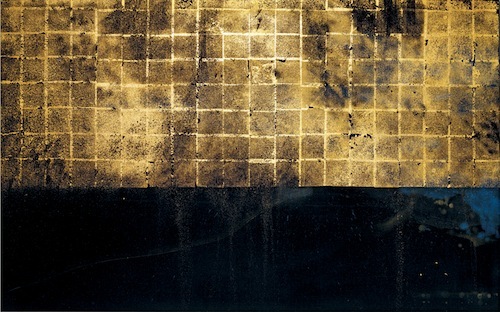2025 qu4rtets+ exhibition:
Makoto Fujimura and Bruce Herman’s original Qu4rtets paintings will be exhibited at Gordon College’s (Wenham, MA) Barrington Center for the Arts from August 27-October 15, 2025. The Exhibition will also feature newer works by Mako Fujimura. The opening reception is scheduled for Sept 6th, 2025, full details TBA. Sign up for our Culture Care Newsletter to receive related announcements.
The Project
A masterpiece can be said to be a work with the capacity to outlast its time and speak to cultures vastly different from its own; to transcend its time and place and inspire new works by artists in succeeding generations.
T. S. Eliot’s Four Quartets is such a masterpiece.
In 2013, Artists Makoto Fujimura and Bruce Herman, along with composer Christopher Theofanidis and theologian Jeremy Begbie, toured an exhibition and festival of theology and the arts which revealed this very thing: Eliot’s masterpiece is still able to transcend its era and social location, generating fresh response and inspiring young artists of today. Fujimura and Herman each completed four large works in response to the imagery, emotion, and allusion evoked by Four Quartets, and collaborated with Christopher Theofanidis in his commissioned musical score entitled “At the Still Point.” Dr. Begbie organized a scholarly and theological colloquium at Duke University that underscored Eliot’s relevance for this new generation.
The QU4RTETS project reveals how Eliot’s faith and literary vision engaged his own generation, how this vision can speak to our own time, and how it can bear rich fruit among future generations of poets, composers, and artists. If you would like to join us in providing the best possible future venues, publications, publicity, and public colloquia to host this revelatory project, please contact us.
FOUR QUARTETS AND FAITH
Why Eliot, Why Paintings, Why Now?
When first published, Eliot’s poem received a lukewarm reception by colleagues and literary critics who compared it to his masterpiece, The Wasteland, and found it lacking. Eliot’s friends, such as Virginia Woolf and James Joyce, criticized the poem for its overt allusion to Christian faith and the traditions of sacred poetry, like that of Dante and Julian of Norwich, and the obvious way the poet attempted to blend modernist literary tropes with traditional religion. These critics thought Christianity was a thing of the past and irretrievable by contemporary artists and thinkers. Yet now, almost a century later, the poem is considered a major milestone in English literature.
Four Quartets is relevant to our own cultural moment because of its powerful testimony to the grace and vision of the Gospel message in a multicultural milieu. In Eliot’s vision all hinges upon the “still point” where the human experience of time evokes wonder, fear and longing for continuance and redemption, and where Christ’s presence is the pivotal point for the entire Creation. Herman and Fujimura’s substantive response in painting, not so much illustrates Eliot’s work or makes direct allusion to passages in the poem as attempts to find, in Eliot’s words, the “objective correlative,” between the poet’s themes and their own works. Christopher Theofanidis’s compelling score evokes the brooding and brilliant light of Eliot’s poem. In effect, the painters and composer are collaborating in intentional dialogue with the poem, revealing the staying power of its genius and its self-declared reliance on the Christian literary and theological tradition.
